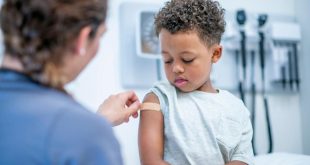Breast cancer isn’t what it was 20 years ago. Survival rates are climbing, thanks to greater awareness, more early detection, and advances in treatment. For roughly 200,000 Americans who are diagnosed with breast cancer each year, there are plenty of reasons to be hopeful.
Symptoms:
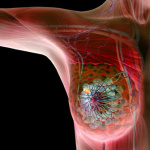
Breast cancer often has no symptoms, but you may notice something you want the doctor to check. Keep an eye out for:
- A painless lump in the breast
- Changes in breast size or shape
- Swelling in the armpit
- Nipple changes or discharge
Breast pain can also be a symptom of cancer, but this isn’t common.
Signs of Inflammatory Breast Cancer
This rare, fast-growing type rarely causes a distinct lump. Instead, breast skin can become thick, red, and look pitted, like an orange peel. The area might also feel warm or tender and have small bumps that look like a rash.
Mammograms
The earlier you find the disease, the easier it is to treat. Mammograms, an X-ray of the breast, can show tumors before they get large enough to feel. The American Cancer Society says women with an average risk level should get a yearly mammogram beginning at age 45. Continue them as long as you’re in good health. The U.S. Preventive Services Task Force says until you’re 50 you should talk to your doctor about your need for testing. After that, get a mammogram every 2 years from age 50 to 74. You don’t have to stop at 75; the group just doesn’t assess the pros and cons. You can work it out with your doctor.
Ultrasound and MRI
Your doctor may order an extra test that takes pictures of the inside of your body. A breast ultrasound can help find cysts, fluid-filled sacs that aren’t cancer. You might get an MRI along with a mammogram as part of your routine testing if you have a higher risk of breast cancer.
Self-Exams
For years, doctors told women to check their own breasts once a month. But studies suggest these exams play a very small role in finding cancer compared to other testing methods. The current thinking is that it’s more important to know your breasts and be aware of any changes, rather than checking them on a regular schedule. If you want to do a self-exam, go over the technique with your doctor.
What If You Find a Lump?
First, don’t panic. Eighty percent of breast lumps aren’t cancerous. They often turn out to be harmless cysts or tissue changes related to your menstrual cycle. But let your doctor know right away if you find anything unusual in your breast. If it is cancer, the earlier it’s found, the better. And if it isn’t, testing can give you peace of mind.
Breast Biopsy
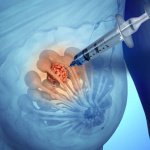
The only sure way to know a lump is cancer is to do a biopsy. This means removing a sample of the lump so it can be examined in the lab. Your doctor may be able to do this with a small needle. But you might need surgery to take part of or the entire lump for testing. The results will show whether it’s cancer, and if so, what type. There are several forms of breast cancer, and treatments are carefully matched to each type.
Hormone-Sensitive Breast Cancer
Some types of breast cancer are fueled by the hormones estrogen or progesterone. Your doctor will call these receptors — they’re proteins that pick up signals from the hormone that tell cells to grow. A biopsy can show if a tumor has receptors for estrogen (it’s ER-positive) and progesterone (it’s PR-positive). About 2 out of 3 breast cancers are hormone sensitive. There are several medications that keep the hormones from causing further cancer growth.
HER2-Positive Breast Cancer
In about 20% of patients, breast cancer cells have too much of a protein called HER2/neu. This type is known as HER2-positive, and it tends to spread faster than other forms. It’s important to know whether a tumor is HER2-positive, because there are special treatments for this type of cancer.
Breast Cancer Stages
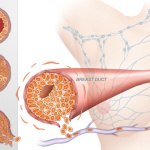
If breast cancer is the diagnosis, the next step is to figure out how big the tumor is and how much of your body it affects. This process is called staging. Doctors use stages 0-IV to describe whether cancer is only in the breast, or if it has moved into nearby lymph nodes or spread to other organs, like the lungs. Knowing the stage and type of breast cancer will help your health care team create a treatment plan.
Survival Rates
The odds of beating breast cancer are strongly tied to how early you find it. The American Cancer Society says 100% of women with stage I breast cancer live at least 5 years, and many women in this group remain cancer-free for good. The more advanced the cancer, the lower this figure becomes. By Stage IV, the 5-year survival rate drops to 22%. But these rates will rise as more effective treatments are found.
Breast Cancer Surgery
There are many types of breast cancer surgery, from taking out the area around the lump (lumpectomy or breast-conserving surgery) to removing the entire breast (mastectomy.) Talk about the pros and cons of each with your doctor to decide what’s right for you.
Radiation Therapy
This treatment kills cancer cells with high-energy rays. It may be used after breast cancer surgery to wipe out any cancer cells that remain near the tumor site. It might be paired with chemotherapy to treat cancer that has spread to other body parts. Side effects include fatigue and swelling or a sunburn-like feeling where you were treated.
Chemotherapy
This treatment uses drugs to kill cancer cells anywhere in the body. They’re often given by IV, but they can be taken by mouth or a shot. You might have it before surgery to shrink a large tumor or after to lower the odds of your cancer coming back. In women with advanced breast cancer, chemo can help control the cancer’s growth. Side effects may include hair loss, nausea, fatigue, and a higher risk of infection.
Hormone Therapy
This is for women with ER-positive or PR-positive breast cancer. These cancers grow faster in response to the hormones estrogen or progesterone. Hormone therapy can block this effect. It might be used after surgery to help keep the cancer from coming back. Doctors sometimes give it to women with high risk factors to reduce the chances of getting breast cancer.
Targeted Treatments
These newer drugs pinpoint specific things inside cancer cells. For example, women with HER2-positive breast cancer have too much of a protein called HER2. Targeted therapies can stop this protein from making cancer cells grow. These drugs are often used along with chemo because they tend to have milder side effects.
Life After Diagnosis
There’s no doubt that cancer is a life-changing experience. The treatments can wear you out. You may have trouble managing daily chores, work, or social outings. This can make you feel isolated. It’s crucial to reach out to friends and family for support. They may be able to go with you to treatments, help out with chores, or just remind you that you aren’t alone. Many people choose to join a support group, either near them or online.
Breast Reconstruction
Many women who have a breast removed choose to get reconstructive surgery. This replaces the skin, nipple, and breast tissue that are lost during a mastectomy. It can be done with a breast implant or with tissue from somewhere else in your body, like your tummy. Some women start the process right after their mastectomy. But you can also get it months or years later.
Breast Forms
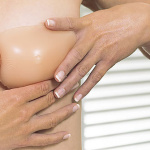
Instead of reconstruction, you can be fitted for a breast form. This is a breast-shaped prosthesis that fits inside your bra. Wearing one allows you to have a balanced look when you’re dressed. Like the surgery, breast forms are often covered by insurance.
Breast Cancer: Why Me?
The most obvious risk factor for breast cancer is being a woman. Men get the disease, too, but it’s about 100 times more common in women. Other things that make it more likely include being over age 55 or having a close relative who had the disease. Still, up to 80% of women with breast cancer have no family history of the illness.
Breast Cancer Genes
Some women have a high risk of breast cancer because they got changes, or mutations, in certain genes at birth. The genes most often involved in breast cancer are known as BRCA1 and BRCA2. Women with mutations in these genes have a higher chance of getting breast cancer at some point in life than those who don’t. Other genes may be linked to breast cancer risk as well.
Reducing Your Risks for Breast Cancer
Women who breast feed their children for the normal length of time (6 months exclusively and up to 2 years or beyond partially) can reduce their risk of breast cancer by 25%. You can also reduce your risk by maintaining a low BMI and by getting exercise. You should also cut back on the amount of alcohol you drink. Birth control pills and some forms of hormone therapy after menopause can boost the odds. But the risk seems to go back to normal after you stop these medications. Good lifestyle choices can help survivors, too. Research says physical activity can lower the chances your cancer will return. And it’s a proven mood-booster, too.
Breast Cancer Research
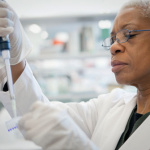
Doctors continue to search for treatments that work better and are easier to undergo. Funding for this research comes from many sources, including advocacy groups throughout the country. Many of the 2.5 million breast cancer survivors and their families choose to participate in walk-a-thons and other fundraising events. This links each individual fight against cancer into a common effort for progress.



